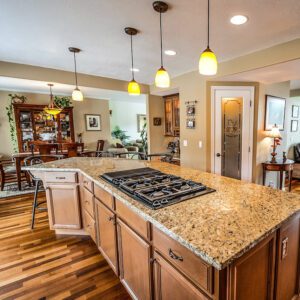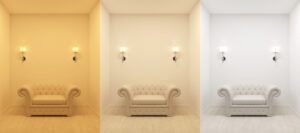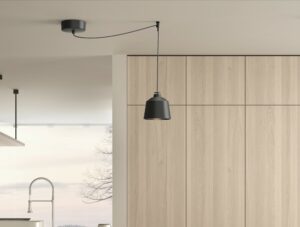Kitchen lighting is one of the most important interior design decisions you can make, and it’s also among the most challenging. In most homes, the kitchen supports multiple functions – as the primary social space where family congregates, as a task-oriented space suitable for a variety of daily activities, and as an entertaining hub around the kitchen island. While the lighting of a room is often determined exclusively by a single use case, lighting in the kitchen must satisfy many.
The good news is that kitchen lighting doesn’t have to be complicated. These simple guidelines will help you achieve a cohesive kitchen lighting plan that addresses your functional requirements while reinforcing your overall kitchen design
The Importance of Kitchen Lighting
Lighting should be a priority for your kitchen design, as it will significantly shape people’s experience in the room. The two most important things to keep in mind are function and mood: what will you be doing in this space, and how do you want the space to feel? Since kitchens are multi-use spaces, thinking through how you intend to use the various areas of your kitchen can help you determine your lighting requirements. At a minimum, you’ll most likely need a combination of ambient and task lighting.
Ambient vs Task Lighting
Ambient lighting refers to general atmospheric lighting that provides a base layer of general illumination, ideally approximating daylight. In kitchens, ambient lighting is often satisfied with recessed downlights (also known as ‘can lights’) which are small round fixtures installed flush with the ceiling. The larger the kitchen space and the higher the ceiling, the more ambient light sources are required.
Task lighting refers to light sources that provide an extra layer of focused light to illuminate important workspaces. In the kitchen, those spaces might include the prep sink, breakfast bar and kitchen island. While recessed downlights can also provide task lighting, decorative light fixtures are usually preferred since they add an element of visual interest as well as extra illumination where it’s needed. Pendant lights are an ideal solution for kitchen task lighting because they provide both these benefits, often at an economical price point.
Pendant Lighting vs. Recessed Lighting
Style and Appearance
Pendant lights are ceiling-mounted fixtures that feature a single light source hanging from a rod, cord or cable. They typically feature either exposed bulbs or light diffused through clear or opaque shades made from glass, linen, mesh, acrylic or other materials. Pendant lights contribute to the aesthetic experience of a room, catching the eye and enhancing a space’s overall look and feel. Whether lightening up a space or adding a touch of formality, pendant lights can reinforce your room’s decor or add a fun new dimension to its personality.
Recessed lights are flush with the ceiling, so they do not provide a decorative function. Rather, recessed lights are intended to provide light ‘invisibly’ and serve a purely practical use. They typically have a metal housing that is hidden from the eye. Beyond concealing the light source, recessed lights also shield the bulb from direct view.
Installation
Pendant lights can be installed without significantly impacting the existing ceiling, as they require just a single junction box for wiring. Recessed lighting can be more complicated to install, requiring multiple holes in the ceiling and proper sealing for insulation.
Cost
When considering the total cost associated with your kitchen lighting, consider the cost of both your fixtures as well as the labor required to install them. The labor associated with installing a series of recessed can lights will typically cost more than installing one, two or even three pendants, but both may be required to achieve the layers of lighting you need to make your kitchen function as beautifully as it looks.
Common Mistakes in Kitchen Lighting
If there’s one mistake to avoid in designing your kitchen, it’s leaving the lighting decisions to the last minute. By prioritizing your lighting plan in your kitchen design, you can decide up front what you want from each area and workspace. By contrast, if you consider your lighting plan after other key design decisions have been made, you are likely to end up with a space that doesn’t function to its full capacity.
The other most common mistake in kitchen lighting is to prioritize appearance over function. An otherwise beautiful and inviting space will become a thorn in your side if it doesn’t provide sufficient lighting to support everyday tasks. It’s entirely possible to design a room that is beautiful and functional at once, but it requires a thoughtful strategy that includes sufficient lighting. Your dream kitchen is within reach – just don’t forget to consider how it’s going to be lit.









